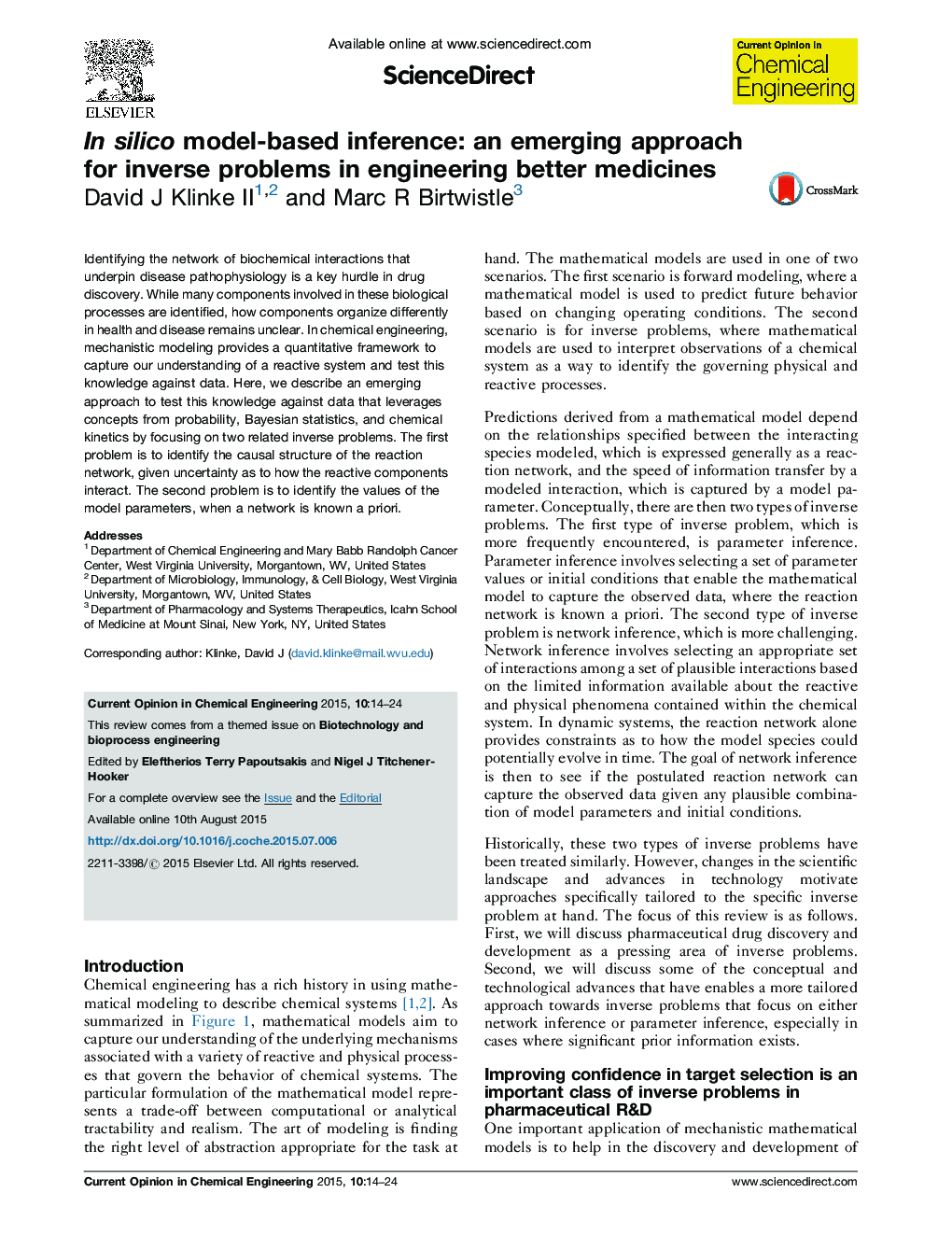| کد مقاله | کد نشریه | سال انتشار | مقاله انگلیسی | نسخه تمام متن |
|---|---|---|---|---|
| 174402 | 458881 | 2015 | 11 صفحه PDF | دانلود رایگان |
• Discovering new drugs requires knowing the flow of information within networks.
• Identifying the causal structure of a network from data is a type of inverse problem.
• Computational solutions use ideas from Bayesian statistics and chemical kinetics.
• Methods use prior knowledge of network and tolerate limited observability.
• While easy to implement, obtaining useful results requires critical analysis.
Identifying the network of biochemical interactions that underpin disease pathophysiology is a key hurdle in drug discovery. While many components involved in these biological processes are identified, how components organize differently in health and disease remains unclear. In chemical engineering, mechanistic modeling provides a quantitative framework to capture our understanding of a reactive system and test this knowledge against data. Here, we describe an emerging approach to test this knowledge against data that leverages concepts from probability, Bayesian statistics, and chemical kinetics by focusing on two related inverse problems. The first problem is to identify the causal structure of the reaction network, given uncertainty as to how the reactive components interact. The second problem is to identify the values of the model parameters, when a network is known a priori.
Journal: Current Opinion in Chemical Engineering - Volume 10, November 2015, Pages 14–24
